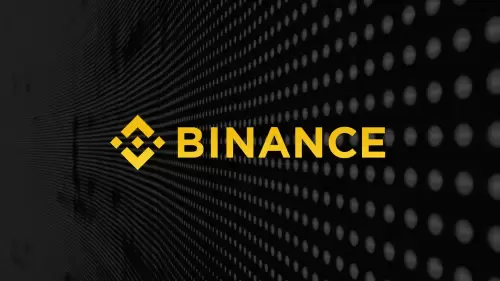 |
|
 |
|
 |
|
 |
|
 |
|
 |
|
 |
|
 |
|
 |
|
 |
|
 |
|
 |
|
 |
|
 |
|
 |
|
加密貨幣新聞文章
Vitalik Buterin Unveils a Plan to Simplify Ethereum's Protocol, Inspired by Bitcoin's Design
2025/05/04 04:15

Vitalik Buterin, co-founder of Ethereum, has shared his vision for simplifying the fundamental protocol of Ethereum, drawing inspiration from the clean design of Bitcoin. In a recent blog post titled "Simplifying L1," Buterin unveiled a five-year plan to make Ethereum more efficient, secure, and accessible. The plan aims to keep Ethereum running as a top blockchain platform while making it more like Bitcoin in terms of how it works and how it is built.
Buterin's reflections on the simplicity of Bitcoin's protocol, which a high school student could fully understand, and how this clarity allowed hobbyist programmers to build a Bitcoin client with ease, has led him to believe that Ethereum should push for similar transparency as a means of broadening participation and strengthening its foundation.
A simpler Layer 1 (L1) of Ethereum, the layer that serves the network, would also be easier for people to understand, leading to greater participation from developers and researchers in the protocol. This would also help to make the protocol less centralized in the hands of a small group of technical experts.
This would also reduce the cost of developing new infrastructure (clients and tools) for the network. Less complexity reduces the chance of critical design and implementation errors for the protocol. The fewer moving parts, the fewer bugs to write and, more importantly, the easier it is to verify that the system is sound, Buterin wrote.
A simpler protocol also decreases vulnerability to social attacks. The network is more secure in coordinating efforts to exploit its structure with fewer components to manipulate. These changes will make Ethereum a more trusted and neutral base layer, like Bitcoin, which helps long-term stability, Buterin said.
This pushes the protocol in the opposite direction to Layer 2 scaling solutions, which are designed to add new functionality. Buterin's goal is to make Ethereum L1 as simple and secure as possible, and then let L2s be used to build any application that people want.
Charles Hoskinson, creator of Cardano and former co-founder of Ethereum, had warned that if Ethereum doesn't address its increasing complexity and reliance on Layer 2 networks, it might collapse in ten to fifteen years. These problems threaten to diminish the fundamental value of Ethereum, so Buterin's efforts toward simplicity are a relevant response to such concerns.
Key Changes to Ethereum's Architecture
Buterin's simplification plan includes a number of technical changes. The main focus of this project is on simplifying the Ethereum consensus layer. The proposed "Beam Chain" initiative aims to streamline consensus mechanisms, making them more efficient and secure. To do so, we suggest adapting strategies proven in consensus theory and combining them with zero-knowledge technologies like ZK-SNARKs to optimize the framework.
Another major upgrade is the replacement of the Ethereum Virtual Machine (EVM), which serves as the smart contract execution environment. Instead of the EVM, Buterin proposed shifting towards a more efficient, ZK-friendly virtual machine like one based on RISC-V architecture. This would shift up the performance by up to 100 times and address the current bottlenecks in transaction processing. This transition would be backward compatible with existing contracts so that developers would be able to upgrade it smoothly.
Moreover, the strategy aims to restrict the number of code lines in Ethereum's fundamental protocol. Setting this cap allows the community to move towards the concise codebase of Bitcoin and keep crucial functionalities. The goal of these reforms is to turn Ethereum into a more efficient platform that will earn trust and become more globally adopted.
免責聲明:info@kdj.com
所提供的資訊並非交易建議。 kDJ.com對任何基於本文提供的資訊進行的投資不承擔任何責任。加密貨幣波動性較大,建議您充分研究後謹慎投資!
如果您認為本網站使用的內容侵犯了您的版權,請立即聯絡我們(info@kdj.com),我們將及時刪除。
-

- 未固定的(UNSD)旨在通過將人工智能與社區參與相結合來破壞加密貨幣市場
- 2025-06-13 09:40:11
- 隨著信心返回加密市場,資金正在穩步流入強大的項目並在技術上改善山寨幣。
-

-

-

-

- 最近的XRP價格變動席捲了市場
- 2025-06-13 09:30:11
- 最近的XRP價格變動席捲了市場,即使沒有重大突破。帶連鎖價格合併
-

-

- 連鎖鏈接(鏈接)價格預測:突破可能將價格推向新高點
- 2025-06-13 09:25:12
- 經過數週的合併和中等價格波動後,最近的分析表明,突破可能會將鏈接推向新高點的可能性。
-

-






























































